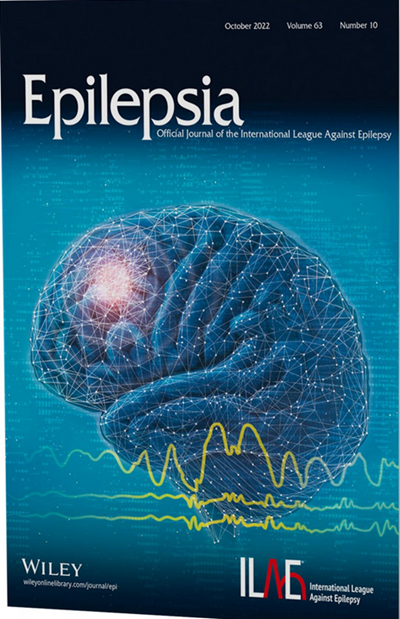诊断功能性癫痫发作的非发作性脑电测量方法
IF 6.6
1区 医学
Q1 CLINICAL NEUROLOGY
引用次数: 0
摘要
目的功能性癫痫发作(FS)看起来像癫痫发作,但其特点是大脑中缺乏癫痫活动。约有五分之一的癫痫诊所转诊患者被诊断出患有这种疾病。诊断 FS 的方法是使用视频脑电图(EEG)记录癫痫发作,然后由专家检查半身像和脑电图。然而,这种方法既昂贵又难以使用,而且会给患者带来沉重负担。目前还没有发现可以诊断 FS 的单一生物标志物。然而,通过机器学习对从脑电图中提取的信号特征进行分类,可以改善目前 FS 诊断的局限性,从而为临床医生提供潜在的非常有用的帮助。数据集包括 48 名 FS 患者(平均年龄 = 34.76 ± 10.55 岁,14 名男性)和 29 名癫痫患者(平均年龄 = 38.95 ± 13.93 岁,18 名男性)的发作间期和发作前脑电图记录,从中提取了五个脑电图频带的各种统计、时间和频谱特征,然后用阈值准确率、五个机器学习分类器和两种特征重要性方法进行了分析。然而,时间特征的表现最好,机器学习模型报告的平衡准确率最高:重要意义机器学习比使用单个特征更有效,可作为 FS 诊断的有力辅助工具。此外,在大多数情况下,合并频段提高了分类器的准确性,表现最低的脑电图频段一直是 delta 和 gamma。本文章由计算机程序翻译,如有差异,请以英文原文为准。
Nonictal electroencephalographic measures for the diagnosis of functional seizures
ObjectiveFunctional seizures (FS) look like epileptic seizures but are characterized by a lack of epileptic activity in the brain. Approximately one in five referrals to epilepsy clinics are diagnosed with this condition. FS are diagnosed by recording a seizure using video‐electroencephalography (EEG), from which an expert inspects the semiology and the EEG. However, this method can be expensive and inaccessible and can present significant patient burden. No single biomarker has been found to diagnose FS. However, the current limitations in FS diagnosis could be improved with machine learning to classify signal features extracted from EEG, thus providing a potentially very useful aid to clinicians.MethodsThe current study has investigated the use of seizure‐free EEG signals with machine learning to identify subjects with FS from those with epilepsy. The dataset included interictal and preictal EEG recordings from 48 subjects with FS (mean age = 34.76 ± 10.55 years, 14 males) and 29 subjects with epilepsy (mean age = 38.95 ± 13.93 years, 18 males) from which various statistical, temporal, and spectral features from the five EEG frequency bands were extracted then analyzed with threshold accuracy, five machine learning classifiers, and two feature importance approaches.ResultsThe highest classification accuracy reported from thresholding was 60.67%. However, the temporal features were the best performing, with the highest balanced accuracy reported by the machine learning models: 95.71% with all frequency bands combined and a support vector machine classifier.SignificanceMachine learning was much more effective than using individual features and could be a powerful aid in FS diagnosis. Furthermore, combining the frequency bands improved the accuracy of the classifiers in most cases, and the lowest performing EEG bands were consistently delta and gamma.
求助全文
通过发布文献求助,成功后即可免费获取论文全文。
去求助
来源期刊

Epilepsia
医学-临床神经学
CiteScore
10.90
自引率
10.70%
发文量
319
审稿时长
2-4 weeks
期刊介绍:
Epilepsia is the leading, authoritative source for innovative clinical and basic science research for all aspects of epilepsy and seizures. In addition, Epilepsia publishes critical reviews, opinion pieces, and guidelines that foster understanding and aim to improve the diagnosis and treatment of people with seizures and epilepsy.
 求助内容:
求助内容: 应助结果提醒方式:
应助结果提醒方式:


